¿Conoces los increíbles Tepuyes?
Estas formaciones son las más antiguas del planeta, originarias de la era precámbrica, con más de 1.700 millones años de antigüedad.
La palabra Tepuy proviene del idioma etnia indígena Pemón, que significa “montaña”. Otras interpretaciones la traducen como “morada de los dioses”.
El escritor escocés Arthur Conan Doyle imaginó en su novela “El mundo perdido” que sus cimas eran el hábitat de enormes dinosaurios.
El tepuy es una meseta especialmente abrupta, con paredes verticales y cimas muy planas (aunque no aplica en todos los casos ), común en la Gran Sabana Venezolana; asimismo es posible encontrarse con estas singulares formaciones en países vecinos como Guyana, Brasil y Colombia.
Poseen alturas comprendidas entre los 1.500 y los 3.015 metros sobre el nivel del mar, es el segundo sistema montañoso más alto de América del Sur, después de la Cordillera de los Andes.
Los tepuyes abarcan tres tipos de paisajes orográficos: un talud con laderas inclinadas en la base del cerro, revestidas por bosques densos; una pared rocosa vertical que puede llegar a medir 1.500 metros aproximadamente las cuales por lo general no poseen vegetación; y la cumbre que es la zona más alta del tepuy, son de forma aplanada y su inclinación es moderada.
Los tepuyes tienden a estar individualmente aislados en vez de formar parte de una cadena común. Esta característica frecuentemente los hace ser el ambiente en donde se desarrollan formas evolutivas únicas tanto animales como vegetales.
Gran número de estas formaciones reúnen características excepcionales como paredes inusualmente verticales y cimas planas. Compuestas principalmente por areniscas, son geológicamente hablando las estructuras emergidas más antiguas del planeta.
En estas formaciones no se encuentran restos fósiles de animales o plantas, los cuales aparecieron sobre nuestro planeta mucho después
Estas mesetas albergan una riqueza florística incalculable, solamente en la Guayana venezolana se han registrado mas de 10.000 especies de plantas silvestres de las cuales 3.000 solo se consiguen en las cumbres de los tepuyes.
En ellos habitan especies únicas en el mundo; la poca presencia de nutrientes en sus suelos han dado origen a una considerable variedad de plantas carnívoras.
En este sentido muchas especies de plantas y animales que habitan en los tepuyes aun no han sido clasificadas, se estima que muchas de estas no han sido descubiertas.
Por otra parte, no solo la flora y la fauna son de gran atractivo para científicos e investigadores, sino también las cavernas, lagunas, ríos y cascadas que se desprenden de las imponentes mesetas. Tal es el caso del “Salto del Ángel” la caída de agua más alta del mundo la cual se origina en el Auyantepui, de este último se han descubierto diversos tesoros naturales que al igual que el Roraima tepui y La Neblina lo hacen formar parte de los tepuyes más importantes de Venezuela.
En Venezuela se han clasificado más de 50 tepuyes, los cuales se encuentran protegidos por Decretos Nacionales que les otorga el rango de Parque Nacional ó Monumento Natural. Asimismo en pro de preservar estos ecosistemas únicos en el mundo, en 1991 se creó la Reserva de la Biosfera “Alto Orinoco-Casiquiare”, en la que se incluyeron cuatro Parques Nacionales y cinco Monumentos Naturales.
Para subsistir en las difíciles condiciones que hay en las cimas de los tepuyes, muchas especies se han adaptado y logrado sobrellevar la situación de extrema dificultad, pisos rocosos, y falta de nutrientes y nitrógeno.
es así como ciertos tipos de plantas viven especialmente en estos sitios y algunas de ellas no las hay en ningún otro lado del mundo situación esta que se conoce como endemismo.
Un Coloso majestuoso que lleva en sus hombros el embate de los tiempos, de la historia misma de la tierra.
Se considera que más del 90% de los tepuyes no ha sido pisado por el hombre, escondiendo misterios y una gran cantidad de especies biológicas aun sin descubrir. Tanta inaccesibilidad y misterio han dado lugar a leyendas e incluso inspiraron a artistas.
_____________
Do you know the incredible Tepuyes?
These formations are the oldest on the planet, originating from the precambrian era, with more than 1,700 million years old.
The word Tepuy comes from the indigenous Pemón ethnic language, which means “mountain”. Other interpretations translate it as the “abode of the gods”.
The Scottish writer Arthur Conan Doyle imagined in his novel “The Lost World” that his tops were the habitat of huge dinosaurs.
The tepuy is a particularly abrupt plateau, with vertical walls and very flat peaks (although not applicable in all cases), common in the Venezuelan Gran Sabana; It is also possible to meet these unique formations in neighboring countries like Guyana, Brazil and Colombia.
They have heights between 1,500 and 3,015 meters above sea level, it is the second highest mountain system in South America, after the Andes.
The tepuyes cover three types of orographic landscapes: a slope with inclined slopes at the base of the hill, covered by dense forests; A vertical rocky wall that can measure approximately 1,500 meters which generally do not have vegetation; And the summit that is the highest zone of the tepuy, are of flattened form and its inclination is moderate.
Tepuyes tend to be individually isolated rather than part of a common chain. This characteristic frequently makes them the environment where unique evolutionary forms are developed both animal and plant.
Many of these formations have exceptional features such as unusually vertical walls and flat tops. Composed mostly of sandstones, the oldest emerged structures on the planet are geologically speaking.
In these formations are not fossil remains of animals or plants, which appeared on our planet much later
These plateaus harbor an invaluable floristic wealth, only in the Venezuelan Guiana have been registered more than 10,000 species of wild plants of which 3,000 are only obtained in the summits of the tepuyes.
They inhabit unique species in the world; The low presence of nutrients in their soils have given rise to a considerable variety of carnivorous plants.
In this sense many species of plants and animals that inhabit the tepuyes have not yet been classified, it is estimated that many of these have not been discovered.
On the other hand, not only the flora and fauna are very attractive for scientists and researchers, but also the caverns, lagoons, rivers and waterfalls that emerge from the imposing plateaus. Such is the case of the “Angel Falls” the highest waterfall in the world that originates in the Auyantepui, of the latter have discovered various natural treasures that like the Roraima tepui and the Neblina make it part of The most important tepuyes of Venezuela
In Venezuela have been classified more than 50 tepuyes, which are protected by National Decrees that grants them the rank of National Park or Natural Monument. Also in order to preserve these unique ecosystems in the world, in 1991 the Biosphere Reserve “Alto Orinoco-Casiquiare” was created, which included four National Parks and five Natural Monuments.
In order to survive in the difficult conditions in the tops of the tepuyes, many species have adapted and managed to cope with extreme difficulty, rocky floors, and lack of nutrients and nitrogen.
This is how certain types of plants live especially in these places and some of them are not anywhere else in the world. This situation is known as endemism.
A majestic Colossus bearing on its shoulders the clash of the times, the very history of the earth.
It is considered that more than 90% of tepuyes has not been trodden by man, hiding mysteries and a great amount of biological species still undiscovered. Such inaccessibility and mystery have given rise to legends and even inspired artists.

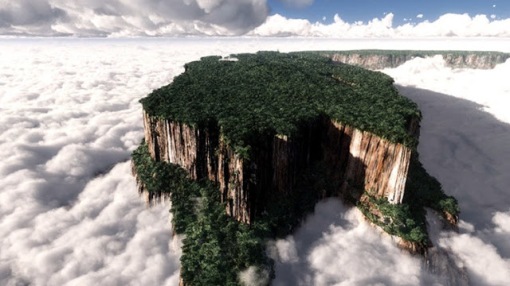
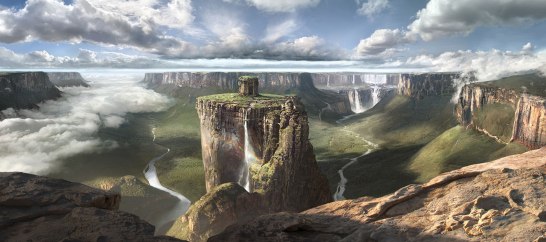
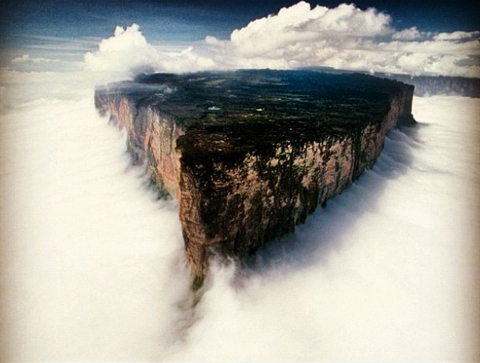
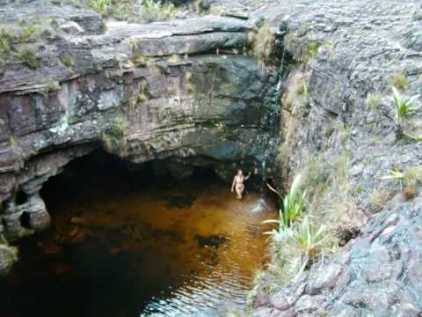

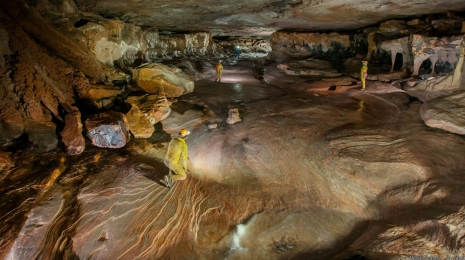

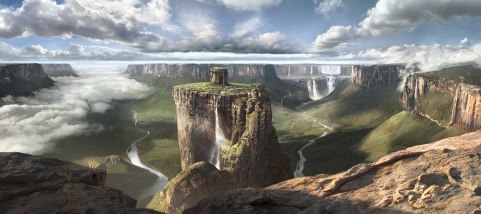
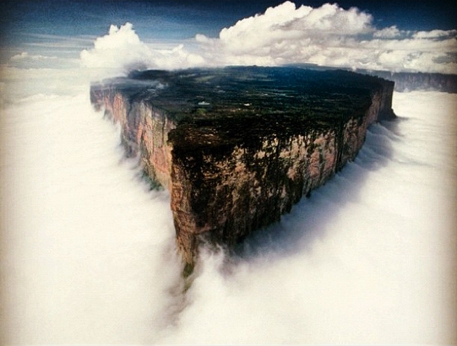
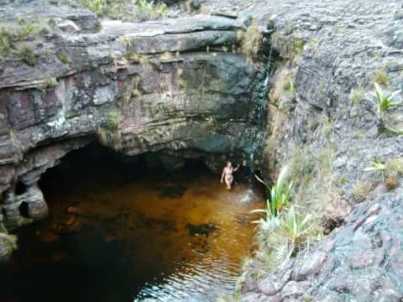
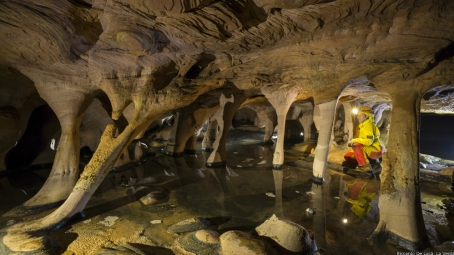
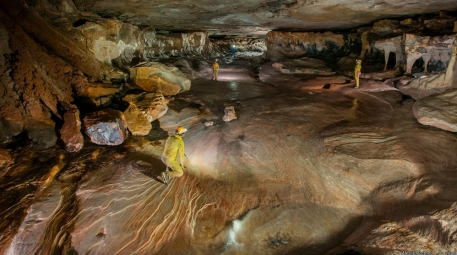
Leave a comment